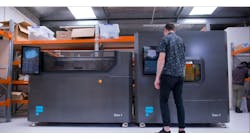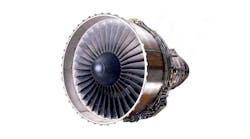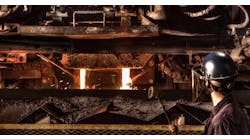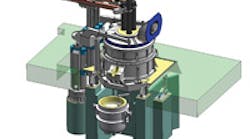The Simetal EAF Micro is a modular arc-melting design for steel foundries capable of producing melts in a range from 5 to 35 metric tons.
For steel foundries, one of the least-asked questions now has an answer. Plant-builder Siemens VAI Metals Technologies has unveiled a new electric arc furnace design specifically developed for foundries and “micro steel works.” The new EAF is promoted as offering flexibility in terms of production volumes and steel grades, but also making it possible for operators to consolidate several melting and refining functions in a single vessel.
Siemens VAI is one of three major builders of plants and equipment for the steel industry, but not for the foundry segment. This may change if a notable trend in the steel market creates a functional convergence of interests: after a decade or more of scaling up the potential capacity of steel mini-mills, steelmakers and plant designers are now working on the potential for steel “micro mills.”
The general idea of a steel micro-mill is a plant with a small production volume (usually stated at about 250,000 tons/year) to produce a narrow range of semi-finished products for a defined geographic region. One micro-mill, designed by one of Siemens VAI’s main competitors, is nearing start-up in the Phoenix area, where it aims to produce rebar. A similar project is in development in near Memphis, and the developers of that project have also indicated plans to build a plant in Western New York.
For the most part, these developments are able to work with scaled down and/or repurposed equipment designs; the evolution of strip-casting technology is an exception, but one that in many ways precipitated the larger initiative.
The Siemens VAI entry to the discussion — the Simetal EAF Micro — is a melt shop concept scaled to the “micro” theme, and promising to accomplish all that a fullsized EAF shop would do. “In contrast to conventional melting processes,” the designer indicates, “the integrated oxygen system enables even complex metallurgical process steps – such as deoxidation and decarburization – to be carried out.”
Expanding the potential to include steel foundries is a clever calculation, and one that may help some operations in that range. Reliable scrap sources are a constant EAF concern (regardless of the size) but Siemens VAI indicates that its Simetal EAF Micro is “less dependent on the state and heterogeneity of the input materials, thus allowing the use of the widest range of raw materials and qualities of scrap.”
The Simetal EAF Micro is scalable to melt 5 to 35 metric tons. Other details of the design are also intriguing: it has a tilting frame “with enhanced dynamic characteristics” that can be installed on a base frame, from a modular design, so the entire installation can be largely preassembled. “Slight modifications to a few components quickly adapt it to handle the complete range of possible tapping weights,” according to Siemens VAI.
So what is the potential for this new design? Sources in the steel foundry sector acknowledge theoretical or vicarious interest in new melting capability, but agree that the timing is wrong. There are no known plans for new furnaces among North America’s steel foundries, but whether that is the result of need or circumstance is unknown. One forecaster believes demand for new melting capacity will emerge within the current decade, but remains noncommittal on the appeal of the Simetal EAF Micro design.
Another source confirms the lack of domestic demand for such equipment: “I doubt many people will be looking to put in expensive new equipment any time soon,” this steel founder opines. “I suspect it will be two to three years before any significant capital spending is done and, even then, I doubt melting will be the area (where capital is invested.)”
Even in the boom times, capital is scarce for steel foundries, and the current situation is notably difficult. But, the same source also proposes that he’d prefer to install induction melting to arc melting, presumably for reasons relating to electric-power cost and quality, among other variables.
Still, for domestic steel foundries the advent of new designs for major equipment has to be seen as a compliment: their market presents an opportunity for one of the world’s leading plant designers. They might also read a cautionary note in this development. Newer, optimized production capability is just the sort of advantage that foreign competitors might use to increase their market appeal.









